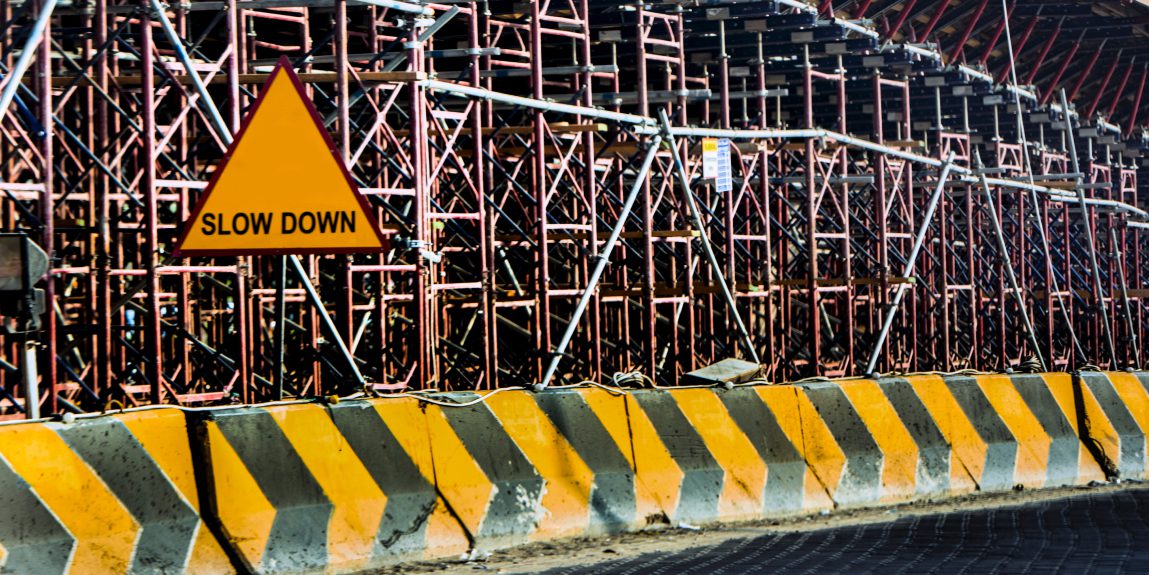

Two years ago as I watched “The Dreamers” directed by the visionary Bernardo Bertolucci, a scene in which the movie’s three protagonists euphorically race through the Louvre struck me. It taught me something about speed, acceleration and learning that is now permanently etched into my consciousness.
As Matthew, Isabelle, and Theo race through the corridors of the museum, their hurried footsteps echo a poignant truth about the nature of our existence. In their frantic pursuit to see the entirety of art pieces as fast as possible, they inadvertently make it impossible to absorb the beauty of the Louvre’s treasures.
As other museumgoers silently contemplate the art with reverence amidst the vigilant gaze of a guard trying to halt their hurried pace, the characters supermarket-trolley dash means they miss everything. The scene stayed with me, prompting deeper introspection long after the movie ended. I was reminded of the scene when I read Trackunit CEO Soeren Brogaard’s article on understanding and working with the pace of learning as the next big business trend.
“In our accelerated society, genuine engagement and meaningful connection with our surroundings often become casualties of our relentless pursuit of efficiency and productivity.“
During my doctoral studies at the DMan program in Hertfordshire, I encountered the influential ideas of Hartmut Rosa, laying the foundation for my ongoing exploration of acceleration, resonance, and their significance in contemporary discourse.
Rosa’s concept of acceleration and resonance offers a compelling framework to dissect the scene from “The Dreamers” and organizational life. Acceleration, as Rosa describes it, encompasses the relentless pace of modern life, characterized by a ceaseless push for speed and efficiency. In the Louvre scene, the frenzied sprint epitomizes this acceleration, as our protagonists strive to consume the vast array of artworks in record time.
However, in their haste, they fail to resonate with the profound beauty and significance of the museum’s treasures. This disconnect between speed and resonance highlights Rosa’s argument that in our accelerated society, genuine engagement and meaningful connection with our surroundings often become casualties of our relentless pursuit of efficiency and productivity.
As I reflected on this scene through Rosa’s lens, it became evident that the pursuit of resonance amidst acceleration is not only a challenge faced within the confines of a museum but a pervasive struggle in the broader construction technology landscape.
In Rosa’s examination of acceleration, he delves into the implicit aggression inherent in our attempts to control or manage the world around us, rather than fostering resonance with it. The scene from “The Dreamers” serves as a vivid illustration of this dynamic.
Matthew, Isabelle, and Theo‘s desire to conquer the museum’s vast expanse and consume its treasures is in effect, a display of dominance over the space. It is in essence the classic embodiment of FOMO (fear of missing out) playing out in all its most negative aspects.
In their pursuit of efficiency and completion, they exhibit a form of implicit aggression towards the museum’s environment, seeking to impose their will upon it rather than slowing down and engaging with it on a deeper, more resonant level.
This aggressive approach to experiencing the world mirrors Rosa’s assertion that the acceleration of modern life often leads to a combative stance towards our surroundings, as we prioritize control and efficiency over genuine connection and understanding. As I contemplated this scene in light of Rosa’s insights, it became clear that fostering resonance requires a fundamental shift away from aggression and towards a more open, receptive attitude — one that embraces the inherent complexity and richness of our relationship with the world.
In the realm of construction and technology, the concepts of resonance and acceleration are deeply intertwined with three prominent business trends highlighted by Brogaard during Next 2024: Evolution of connectivity, rise of data complexity, and the explosion in tech-enabled productivity tools like generative AI.
“By understanding and embracing the pace of learning, organizations can harness the full potential of these trends to drive innovation, enhance operational efficiency, and ultimately, achieve sustainable growth in the ever-evolving landscape of construction and technology.”
Brogaard’s emphasis on understanding and working with the pace of learning as the next big business trend aligns seamlessly with these trends, underlining the critical importance of adaptation and innovation in the face of accelerating technological advancements. As organizations in the construction and technology sectors grapple with the challenges and opportunities presented by the proliferation of IoT sensors, they are confronted with a deluge of data generated at an unprecedented rate.
This explosion in data, coupled with the advent of generative AI technologies, further accelerates the pace of information processing and analysis. However, amidst this acceleration, the pursuit of resonance — establishing meaningful connections with the data collected and analyzed — becomes increasingly vital.
There is a need for organizations to strike a balance between the acceleration of data generation and analysis and the cultivation of resonance, particularly as they navigate the complexities of IoT integration, data management, and AI implementation. By understanding and embracing the pace of learning, organizations can harness the full potential of these trends to drive innovation, enhance operational efficiency, and ultimately, achieve sustainable growth in the ever-evolving landscape of construction and technology.
The concept of transitioning to a core-digital business model represents a fundamental shift in organizational strategy, where digital operations are fully integrated into business operations. This paradigm recognizes the pivotal role of AI and data in shaping the future of business competitiveness, emphasizing the imperative for organizations to assimilate AI and data quickly to stay ahead in the evolving landscape.

By embracing a core-digital model, organizations not only accelerate their pace of learning but also enhance their resonance with the evolving digital ecosystem. Resonance, in this context, refers to the ability of organizations to establish meaningful connections with the data they collect and analyze, enabling them to derive actionable insights that drive innovation and growth.
However, executing this shift effectively requires a concerted effort to reframe traditional hierarchies and prioritize digital initiatives that are fully integrated into core business operations. This is not change that happens overnight. You have to meet the process halfway and allow for uncertainty to reap the full benefits.
As organizations navigate this transition, partnering with software experts like Trackunit becomes paramount. Native IT companies have encoded into their culture how to allow for resonance with these technologies. Partnering with software experts also provides additional benefits such as specialized domain knowledge, access to cutting-edge technology solutions, and proven implementation strategies.
With their expertize and experience, software companies like Trackunit can guide organizations through the complexities of digital transformation, ensuring that businesses can harness the full potential of AI and data to drive business impact and achieve sustainable growth.
To address these challenges, IT companies must strike a balance between the acceleration of data generation and analysis and the cultivation of resonance. This entails investing in technologies and processes that enable efficient data management and prioritizing data quality over quantity.
“Native IT companies have encoded into their culture how to allow for resonance with these technologies. Partnering with software experts also provides additional benefits such as specialized domain knowledge, access to cutting-edge technology solutions, and proven implementation strategies.”
Additionally, fostering a culture of data-driven, decision-making that emphasizes context and meaning is crucial. By providing training and support to employees to navigate the complexities of working with large volumes of data, organizations can foster a sense of connection and purpose in their data-related activities, ultimately enhancing their ability to leverage data for strategic advantage.
In conclusion, as we navigate the ever-evolving landscape of construction and technology, it’s crucial to recognize the intertwined nature of acceleration, resonance, and digital transformation. By understanding and embracing the pace of learning, organizations can unlock new opportunities for innovation and growth in an increasingly digital world.
Just as a museum guard in “The Dreamers” retains a serenity amid the bustling excitement, software experts like Trackunit act as trusted guides, steering you through the intricate pathways of digital transformation. Their expertize ensures that you don’t overlook the invaluable treasures adorning the metaphorical walls of your company’s database, guiding you to resonate and uncover the hidden gems within.
Read what Trackunit’s Thomas Bulow had to say on the implications for construction machinery manufacturing in an ICP environment as we continue our series on the new business transformation.


Be first to hear about product launches, updates, and industry insights